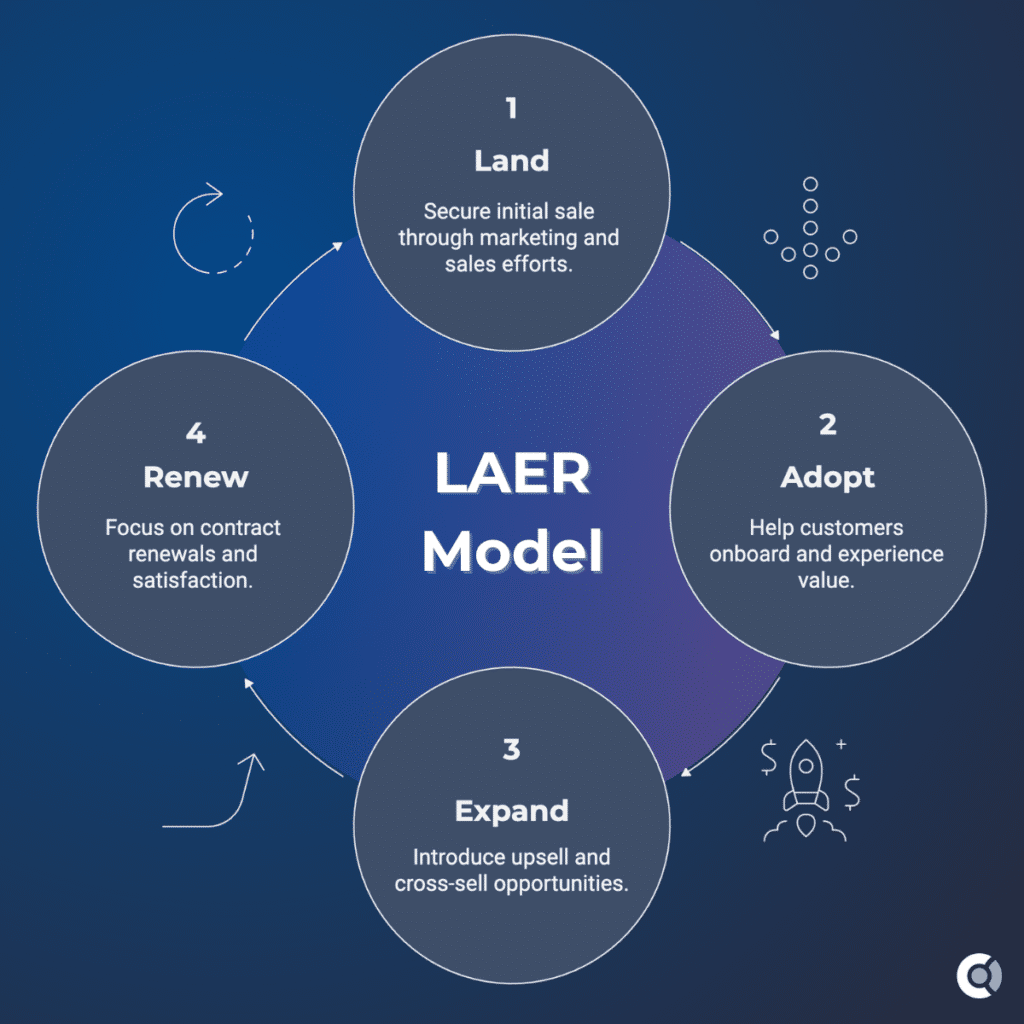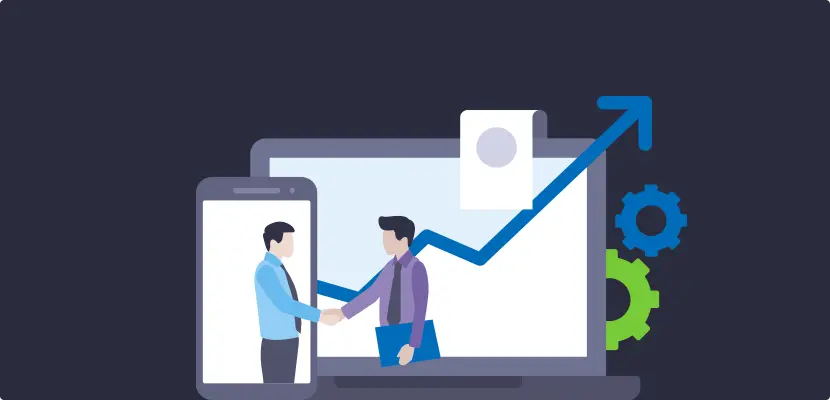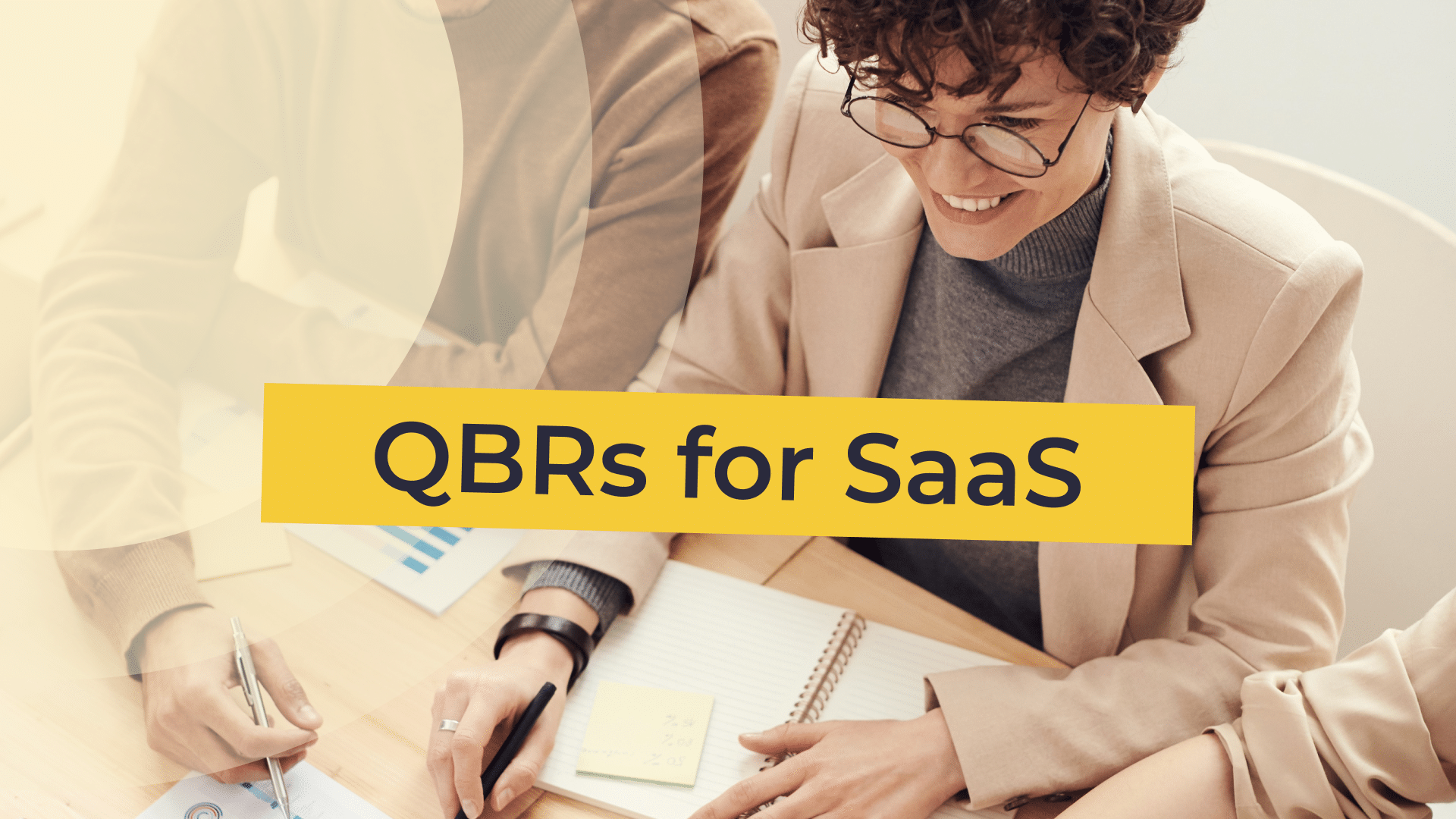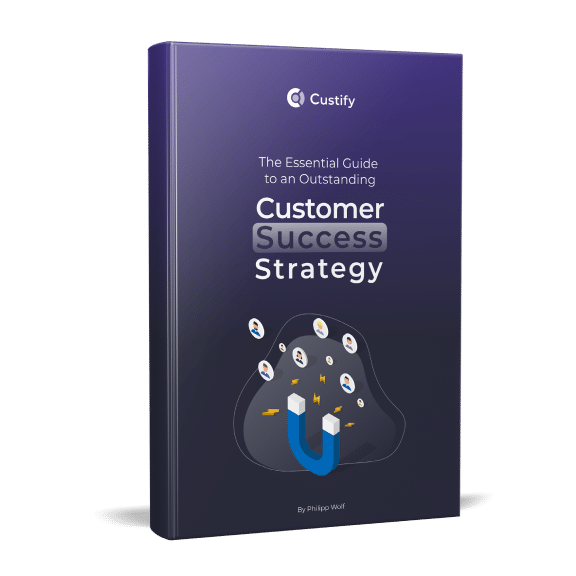Customer engagement is the bread and butter of customer success.
Without proper engagement tactics, we wouldn’t be able to onboard accounts, deliver customer outcomes, or reach our MRR targets. One such tactic is the LAER engagement framework.
Today, I thought we’d take a closer look at LAER, as it is one of the foundational models for CS and has become an industry standard, even if many don’t fully understand its logic and origin.
What Is the LAER Customer Engagement Framework?
LAER (Land, Adopt, Expand, Renew) is a customer engagement model developed by TSIA for companies adopting the “as-a-service” model. Its main purpose was to drive customer satisfaction, increase retention, provide more value to customers, and foster long-term business growth.
What Are the Four Components of the LAER Model?
The basic logic and components of the LAER model are quite easy to understand as they flow naturally from one to the other:
- Land. To be able to engage with customers, you need to start by landing a sale. The first phase involves everything from marketing to sales and to customer success.
- Adopt. Adoption is the next logical step. Beyond the onboarding flow, customers need to actually start making use of your solution. If they only try it out without putting in the necessary effort, they’ll never reach the a-ha moment, and they won’t see a reason to renew.
- Expand. Interestingly, we sometimes think of expansion as the last stage of the customer journey. However, according to the LAER model, it comes before renewal. Why? Because once customers see value, they’re primed for an upsell proposition. Renewal could be a year off. During this time, your customers might appreciate or even require a higher plan.
- Renew. Lastly, you’ve reached the retention stage. Your focus now should shift to renewing contracts and making sure customers continue to get value from your products and services.

Core Metrics For Each LAER Stage
To make it easier to track your progress towards adopting the LAER model, here are some core metrics you should be tracking for each stage:
- Land. During the first stage, focus on metrics related to new revenue streams, customers, acquisition costs, and sales.
- New ARR
- Number of new customers
- CAC and payback period
- Win rate and ICP fit
- Adopt. Adoption is where customer success comes to the fore, so most metrics will be easily trackable in your CSP.
- Time to value / first value
- Activation rate
- Feature adoption
- Onboarding completion
- Product usage depth and breadth
- Expand. During the expansion phase, metrics indicating growth should be prioritized.
- Expansion ARR
- Expansion rate
- Net revenue retention / Net dollar retention
- Expansion MRR as % of total MRR
- Renew. Lastly, in the renewal phase, traditional customer success metrics start to become more important.
- GRR
- Customer churn rate
- Customer renewal rate
- Customer retention
- Revenue retention
What Does the LAER Model Mean for Sales?
Sales play a pivotal role in the LAER model as they usually handle the starting phase. Especially for new companies or those that’ve recently switched to an XaaS model, the first few accounts are not just critical from a revenue perspective; they also dictate what types of customers you should expect moving forward and how you can optimize your product to ensure value delivery and guarantee adoption.
I’ve long said CS and Sales need to work hand in hand, and the LAER model perfectly underscores why. In my view, there are two key areas where Sales and Customer Success need to optimize collaboration:
- Using Churn Data to Optimize Sales Prospecting and Qualification. The customer success data that lives in your CSP is a gold mine for sales. Reps can take information about which customers churned from CS and qualify new leads based on those data points.
- The Sales to Customer Success Handoff. The crux of CS-Sales alignment is the handoff – it introduces the CS team, it allows both teams to stay in the loop, and ensures total transparency for customers during the process – reassuring them you’re taking the necessary steps for their success.
Is the LAER model the same as the LAER listening model?
No. The LAER listening model is distinct and applies specifically to sales, and sales objections. This one also contains four phases:
- Listen. Practicing active listening when conversing with prospects.
- Acknowledge. Recognizing prospects’ concerns so they feel heard and understood.
- Explore. Asking questions to dig beneath the surface and obtain more details about their objections.
- Respond. Formulating a response rooted in empathy and understanding.
This model was designed to help salespeople overcome objections from prospects during the sales process. The main point is to approach sales conversations with empathy and listen to what the prospect is saying, acknowledge their concerns, and explore them in depth.
Using the LAER Model In Customer Success
Next, I’ll walk you through the process of setting up the LAER model and becoming LAER efficient when transitioning to or starting an XaaS business.
1. Set Up a Reliable Data Foundation and Find Where Customer Success Lives
When building customer success, I’d say the first brick is data. I’ve seen far too many fresh SaaS companies that assign tasks based on assumptions or standard practices. Don’t be like them, don’t work in the dark. Get your ducks in a row, as they say, and find customer insights. If you don’t have them, generate them from your first few customers.
- Find what’s important to your customers and to your company. Determine the pain points and desired outcomes of your first few customers. Also, look to identify what counts as value-addition for them, what type of support they expect and would need, or like.
- Determine the place where your customer success initiative will live. Next, graduate your data from disparate, disorganized spreadsheets. Pick a customer success software that can be the home for your data points: gathering the numbers, generating the insights, and proactively completing actions to ease your CSMs’ workloads.
- Ensure you’re tracking those KPIs and set corresponding OKRs. Now you know what customers want and where your data lives. Next, set up customer health scores to track those KPIs and set some overall objectives for your customers. When you create your health metrics, you’ll be able to set thresholds for when they’re red, yellow, or green (lagging, average, or leading indicators).
How Your CS Data Foundation Should Look
Ideally, at the end of the process to clean up your customer data, you should have one of the following models:
- Low Tech Version:
- Unified spreadsheets with relevant data (remove any odd or misleading metrics and datapoints).
- CRM (fully set up)
- Custify (or other CSP), at least partially integrated with your other tools (bare minimum, your product and CRM).
- High-Maturity Version:
- Full data warehouse (gathering data from all your tech stack, including your product, support platform, CRM, and more).
- Custify (or other CSP), fully set up and integrated with all your other tools.
Read more: How to Enhance Customer Success through Data eGuide
The low-tech setup is the bare minimum for a successful CS initiative. Many CS organizations already have tracking and the high-maturity version in place. Once your customer success operations framework is in place, you’re primed for LAER implementation.
2. Analyze Your Current Outlook: What’s Holding You Back from LAER?
The next step is to review your dashboards and marry them to the concept behind LAER:
- Review. Look at your current KPIs and OKRs, and see what doesn’t fit the new model. Remove or replace those. Repeat this until your dashboards look close to what you’re aiming for.
Example: one of your objectives is to secure renewal for an account, with one of the KPIs being “number of support tickets.” This is a very common example of reactivity that’s not sustainable long-term in any SaaS. Instead, think about LAER and reframe: your objectives should be adoption, then expansion. You can do that by guiding customers, adding value, and encouraging upsells. So the KPIs should be feature usage, goals completed, product usage, and MRR. - Strategize. Next, find organizational practices that are incongruent with LAER.
Example: a customer escalates an issue, so the entire CS team tries to put out the fire. This is how you’ve always dealt with these issues. But what if your customers never needed to escalate the issue? With proactive engagement principles, you can use your CSP to identify issues before they reach escalation, send solutions proactively, and reduce the number of fires your team needs to put out. Instead, you can replace that practice with more focus on customer value addition and growth. - Improve. Determine what could be improved and be specific about next steps. As previously mentioned, come up with new objectives, new KPIs, new metrics to track, and assign tasks accordingly.
Your customers leave when they don’t feel supported, empowered, or seen. When support is reactive, you wait for the customer to raise a red flag. By the time they email you, complain in-app, or, in the worst case, ghost you entirely, the damage is already done. They’ve already experienced friction. They’ve already considered leaving. Reactive support says: “Let us know if something’s wrong.” Proactive success says: “Here’s how to win.”
– Amir Reiter, CEO @ CloudTask, The Silent Killer of SaaS: Why Reactive Customer Support Is Tanking Your MRR
How LAER Efficient Am I? LAER Efficiency Curve Checklist
Based on the LAER model and our experience working with highly-diverse businesses from across the SaaS space, I can identify four phases on the way to LAER efficiency. These are:
- Level 1: You’re focusing on landing new customers and managing renewals through tried and true SaaS practices, with minimal tracking.
- Level 2: You’re still focusing on landing new customers, but you’ve added some adoption tactics, with customer retention practices still on the reactive side, but getting more efficient.
- Level 3: Your workflows for landing, adoption, and renewal are fully optimized and in place. You’re now looking to add the Expansion phase between Adopt and Renew, but it’s still early stages, and upsells / cross-sells are opportunistic.
- Level 4: You are now fully LAER-efficient: landing flows grow and adapt, proactive adoption and tailored onboarding, structured expansion motions that go before renewals, which are seen as the outcome, not the first time you speak to the customer.
3. Work Strategically and Orchestrate the Entire Customer Journey
All these efforts mean you’re on the right track. But it’s so easy to get derailed. The way to prevent that is by working strategically. Here’s what I mean:
- Put those next steps on a timeline. Borrow a page from the standard project management model – put your LAER implementation on a timeline and track it using milestones such as: the first client, the first customer outcomes, the first expansion, the first renewal, and then scale.
- Assign tasks to the right people. Distribute the work that needs to be done so everyone has a part to play and gets a clear picture of what LAER is truly about.
- Determine who owns each part of the process. Each tactic employed during LAER implementation requires a designated person responsible for it. This should be the SOP for LAER to work.
- Make sure everyone’s aligned on the next steps. Ensure Sales, Marketing, Product, CS, and all other teams are aligned on your LAER approach. Create a simple flow of information that makes sense for your organization and ensure
4. Begin LAER Experimentation and Drive Product Adoption
Everything up until this point was setting you up for LAER success. Now it’s time for the actual implementation.
Let’s assume Sales and Marketing have the “landing” part well in hand. Your initial task in CS is to support their efforts whichever way works best for your scenario.
Then it’s time to implement tactics for product adoption, championed by CS:
- Orchestrate an unbeatable onboarding experience. Your first customers will be the key to unlocking any growth. So their experience should be great. Will you make mistakes? Probably. But own them, be honest and open, and your customers will sing your praises even when you screw something up.
- Deliver value at every corner. You’re not going to fulfil your customers’ outcomes out of the gate (unless you have a very simple, self-service product), so you should have other ways of value addition prepared.
- Break down your onboarding flow into distinct phases. That way, customers know what to expect and can see the peak before they climb. It’s always helpful to paint a clear picture of the outcomes before customers commit to the onboarding and implementation journey.
These are just a sample of the things you can do. Remember to analyze your KPIs continuously, monitor, and adapt accordingly. For more on climbing the product adoption curve, we’ve got a separate blog entry.
5. Determine Your Ideal CSM Ratio and Optimize Processes
A common pitfall with LAER is overspending on customer success. The logic being, if we need to treat customers with as much care as possible, then it makes sense to hire as many CSMs as we need, right? Not quite. Let me explain:
A lot of tasks in CS, even more nuanced and sensitive ones, can be automated. Not only that, but plenty of tasks tend to bleed into CS from support or Sales. The point is, there are several ways to quickly optimize your CS workflows:
- Reduce or even remove busywork with automation
- Encourage proactive support
- Take full advantage of your customer success tools
- Focus your CSMs on the key value-adding activities
The ideal CSM-to-accounts ratio will vary greatly depending on your company type and business model. Don’t overlook this key factor, or you’ll end up overinflating the cost of CS without actually reaping the benefits.
6. Go Future-Proof and Scale Expansion and Renewals
Now that customers are onboarded, your focus should move to expansion and then to securing renewals, as per the model. The two go hand in hand:
- Expanding accounts through upsells and cross-sells is natural. Some require more seats, others more features, and others still require both. In CS, we don’t like to view this process as a sales tactic for growing revenue (even though it is part of the outcome). Instead, it’s a way to make sure customers get the most value they can out of our products and services.
- This builds into a smooth renewal cycle since customers are happy with the product and understand what they’re spending money on. This is where the magic of LAER comes into play. Too many businesses operating without a clear customer success vision forget about accounts until renewal comes around, and then get surprised by churn. We should be thinking the other way around: how can we grow the value this customer receives so that when the renewal date hits, churn is out of the question? That’s the logic behind LAER.
For more guidance on expansion and renewals, check out our dedicated guides:
- Guide to Upsells and Cross-sells in SaaS. Included: overview of expansion, full set of strategies, mistakes to avoid, and examples from around the SaaS world.
- Customer Churn – The Ultimate Guide. Included: definitions of the two main types of churn, churn formulas and calculator, and tactics to increase renewals.
Once your LAER experimentation reaches this point, it’s time to draw a line and see if it’s working or not. If you’ve followed the suggestions up to this point, you should be close to a working LAER model. With a bit of fine-tuning, you’re well on your way to becoming LAER efficient.
Micro Case Study: From LAER to Organizational Success
To help you more with LAER implementation, here’s a short case study from one of our industry friends and experts, Katherine Tattum:
While I was at Tali AI, we relied on [LAER] by converting a single user at an org and encouraging them to show their colleagues, building it into an organizational success.
Key lessons learned:
- The more data you have about your users’ organization, the better to understand the upside, the better off you are. At Tali, we sometimes knew quite little about them because of the market we were in (primary care), so we got this info by asking questions, being curious, and documenting what we found out.
- Use the data gathered to score your accounts- potential MRR growth needs to be in there.
- Growth will go nowhere if you don’t make the initial users successful. Providing a great onboarding and success experience is vital.
- Classic account management techniques of mapping out the organization help – understanding who the champions, decision makers, and detractors are helps you navigate.
- All of this isn’t just by the account management team but also by every person who comes into contact with them. Sentiment analysis and other tooling can help what is otherwise a human and uneven process.
– Katherine Tattum, Fractional CCO/COO, Insight Health Tech
Begin Your LAER Implementation with Custify
Historically, based on the many conversations we’ve had with CS leaders over the years, the biggest obstacle to LAER effectiveness is the lack of a good platform that can centralize all customer success data and help CSMs act on customer insights and signals.
Custify’s mission, from the very beginning, was to solve for this inefficiency – to help SaaS leaders with a clear overview of how their customers are engaging with their product.
Up for a review of how our customer success platform can transition your SaaS to LAER efficiency? Schedule a 15-minute talk, and our team will walk you through your next big strategic moves.




